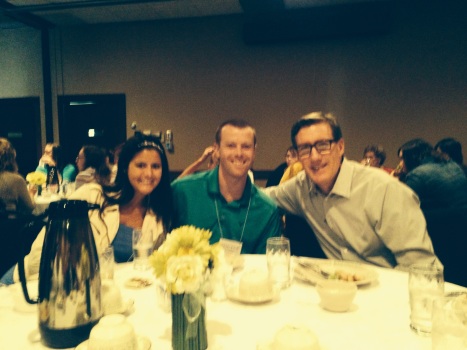What happens when you hit a rut? In the 180 plus days of school, it is bound to happen. The mid-semester innovations slump seems to be upon us here in the basement. We have had a few failures, a few successes, but now it is time to take what we have learned and do something amazing.
As I sit and listen to an unusually quite room here in innovations class, it is clear that my pre-blogging speech inspired some reflection today. So what do we do when we need to be inspired?
Reexamine your passions
Why are we even here? What are we good at? How can I align those passions and skills with a problem that lies ahead? On Monday for our brainstorm activity, we made a list of our passions and skills. We then narrowed them down by grouping them together in order to find “the sweet spot” where our passions intersect. We then made a list of problems we have seen around us. How can our passions and skills help to solve those problems?
Take a look at the video below to see what we did at the start of the week.
The next step is for those who were unable to determine a problem they cared about in that session. The assignment over the weekend will be to start a “Bug List” in the notes app of their phone.
Put yourself and your beliefs out there
When we are challenged, we have to determine whether we will stand behind our beliefs or want to disregard them. Blogs help us do to this. My most important example came from innovations class last year. She and I each tweeted her blog post about sexual assault and a discussion with a teacher. The responses she got were rude, offensive, and ignorant. She came to class and asked, “What should I do? Should I take it down?” What we learned was that when trying to make a change, we often run into resistance. This is the time when we determine how strong our beliefs are. That resistance meant that she hit a nerve and needed to keep going. After seeing that response, the student had a renewed commitment to her project and her ultimate goal of educating her fellow students on sexual assault and rape culture. If our beliefs go unchallenged, it can be difficult to find the dedication and determination to make something happen.
Collaborate with trusted peers
When we work with others whom we respect, we have an opportunity to grow our thinking. Even more important is the energy that comes from a great sharing session with a group. We have a chance to be that source of energy for others each day. Think about the last time you met to talk about a great idea, great book, or great speaker. When we have something to discuss that truly matters to us, it is energizing to share that sense of community and build ideas together. Be an energy creator, not an energy vampire!
My hope is that our innovations class continues to see the potential in their ideas and the world around them. Looking back at these three ideas, I find that I use them in my professional life, and that is what makes innovations class so important. If these students can build these skills in high school, they will be far ahead of their peers as they head on to their next steps in life.
Knowing and addressing this slump is an important step on our road to big successes.

